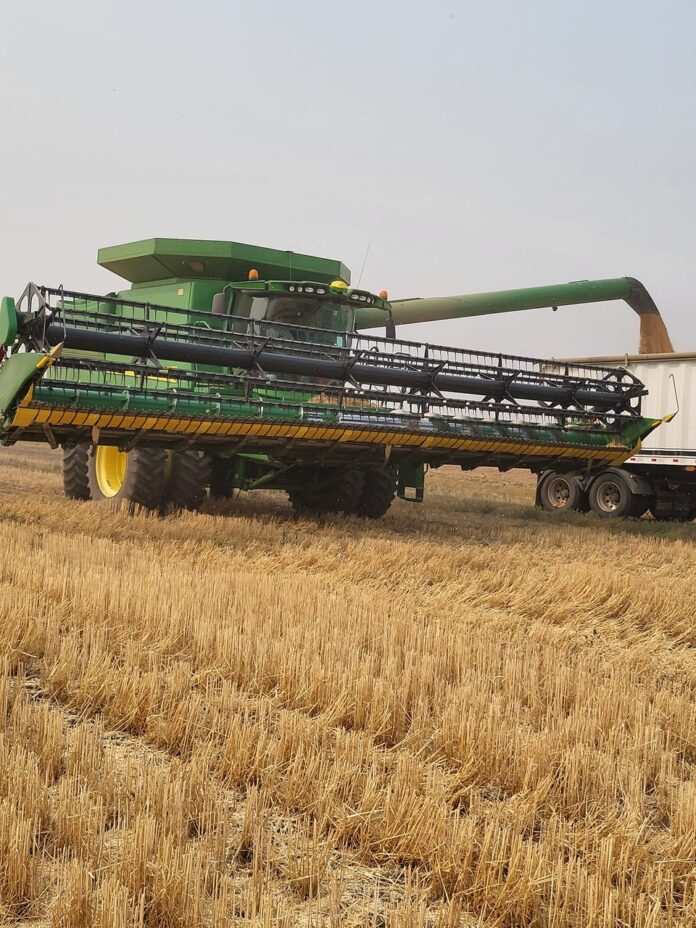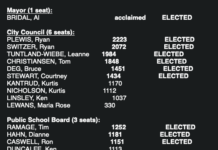
By Matthew Liebenberg
It has been another dry year for Canadian Foodgrains Bank growing projects across southwest Saskatchewan due to a lack of rain during key periods of the growing season.
The harvesting of crops for these projects have been completed and the impact of those weather conditions have become evident.
Rick Block, the Saskatchewan regional representative for the Canadian Foodgrains Bank, said moisture conditions varied across the southwest, but a large part of the area was essentially dry.
“The bigger underlying piece of all this is that we’ve had numerous years of drought, some very severe and some simply severe,” he noted. “They’re stacked up on one another and essentially what I’m hearing from farmers is there’s no moisture in the subsoil.”
It did not mean that harvest was a complete failure for these projects in the southwest, but the yield was generally below average.
“There was some decent rain in spring,” he said. “But by about July 10 to 15 many farmers started to really see that there’ll be very little potential here, because the forecast is just too dry and it’s at a critical time when a crop needs to fill out and there just wasn’t any rain.”
The harvest outlook for growing projects in other parts of the province was more favourable and while still variable, the moisture received were more adequate.
There are 33 registered growing projects for the Foodgrains Bank in Saskatchewan for 2023, which is one more than last year. In addition, many farm families in the province will support the Foodgrains Bank with a grain donation at an elevator.
Grow Hope Saskatchewan, which is one of the registered growing projects, actually has six field sites. This is one more than last year and it increased the land available to 421 acres. The one site is located at Main Centre in southwest Saskatchewan, where Dan and Carol Siebert have provided 125 acres for a fourth growing season to support Grow Hope Saskatchewan.
The farming of the land provided by the Sieberts was done by neighbouring farmers Chaun and Sara Holfeld. The barley crop matured quickly and was harvested in mid-August with a yield of about 25 to 30 bushels per acre.
The Grow Hope projects follow a different approach than typical growing projects. It makes acres available for sponsorship by individuals as a way to offset input costs.
“Most traditional community projects look for charitable donations from within the larger agricultural community sector to be able to help offset their cost by providing inputs,” Block explained. “Grow Hope supports the input costs by virtue of creating a community of people who are interested to help alleviate hunger in other parts of the world and want to support farmers who are offering their acres.”
The Southwest Growing Project at Leader has been taking place for about 18 years on a full quarter section. The harvest of the durum crop took place on Sept. 4 and project member Clint Ausmus said the yield was around 8.5 bushels per acre.
“We had good snow cover, which gave us a good start, and a couple early rains,” he said. “But then it stopped. It was dry in June and July.”
The Tower Hills growing project, which is located on a quarter section west of the village of Golden Prairie, had another very challenging year. Forbes Van Dellen said they experienced a sixth dry year in a row.
“It was terrible,” he noted. “Our problem is now we’ve used up all the reserve moisture. So if we would have had some reserve left from previous years, some of the crops wouldn’t have done too bad, because there was a little bit of showers, but since there was no reserve, they were pretty sad.”
The spring wheat was harvested in early September, but they only got two bushels per acre and it will be a struggle just to cover their input costs.
Van Dellen is a founding member of this growing project with farmer Greg Knodel. They have steadfastly kept the project going for about 15 years, but it has become increasingly difficult.
“We’re not as big as other projects and we don’t make as good crops, but somebody gains along the way, and that’s what we do it for,” Van Dellen said. “I’d hate to give it up, but it’s tough.”
The Grasslands growing project has two sites. Landowner Bruce Pate provides 144 acres for the project location near the village of Stewart Valley. The harvesting of the red lentil crop took place on Aug. 4 and the yield was 16 bushels per acre.
“It’s a decent crop for this year in the drought,” Pate said. “We’re grateful for it. It was a dry year. … We had some rains early on in May and early June, but not much later on in June or not much in July.”
He has been providing the land for the Stewart Valley community project since 2008 and it has been well supported.
“We’ve been blessed and we are never short on food,” he said. “So we want to help those that are experiencing hunger and hopefully our donations will make a difference in their lives, and they can develop the infrastructure to produce enough food to have three meals a day.”
The other site for the Grasslands growing project is known as Lone Tree. The 160 acres is located just north of Swift Current next to Highway 4.
Project coordinator Andrew Gerbrandt said the lentils were harvested during the last weekend in August and the yield was around 11 bushels per acre.
“It didn’t yield very good with the drought, but with the price of lentils we’ll still be able to do a good donation,” he said. “It’s still in the bin and will probably be shipped over the winter.”
Pattison Agriculture has been doing the farming operations at this site for several years. Others have helped with land rolling, trucking and inputs.
“It’s worked well for us,” he said. “There’s good support there.”
The Christ the Redeemer growing project is located just north Swift Current. Project coordinator Kevin Zerr said the total size of the project is around 165 acres that are split between two fields, which are about half a mile apart.
The harvesting of the durum crop took place on Aug. 30 and the result was quite different between the two fields. One had a yield of eight bushels per acre and the other yielded 24 bushels per acre.
The field with the higher yield received more rain and a portion of it was deep ripped last fall, which helped to improve the yield. However, the yield for both fields was lower due to overall lack of rain during the growing season.
“It was short of rain in the critical month of June and that’s when the crop went into a stress,” he said.
Project proceeds from the sale of a crop are used in two ways. A portion is used to make a donation to the Canadian Foodgrains Bank and the other portion is a donation to the building fund of the Christ the Redeemer Roman Catholic Parish.
According to Block the Canadian Foodgrains Bank provided assistance to over 1.1 million people in 36 countries in the 2022-23 fiscal year. It funded 126 projects in these countries at a budgeted cost of $79.8 million. Over 60 percent of this amount was used for emergency food assistance. The remaining funds are used to build agricultural capacity, mostly through conservation agriculture training as well as some nutrition focused training.
“Our investments in working with local communities to help people grow more and better food is actually a very wise investment, because it helps to build resilience and stability for communities and regions,” he said. “That happens particularly in areas where there is stability and there is not conflict. Our emergency food assistance is helping people to get through a really difficult time period. We’re helping people get by who are maybe in internal displacement camps or refugee camps. They’re essentially waiting for a time when the situation in their home country or region calms down.”
Up to 783 million people in the world experience hunger and nearly 98 per cent of them are in developing countries. Around 80 per cent of displaced people live in countries affected by long-term hunger. In 2023 the Canadian Foodgrains Bank is reaching a milestone of 40 years of working to end global hunger. Its vision still remains a world without hunger.





